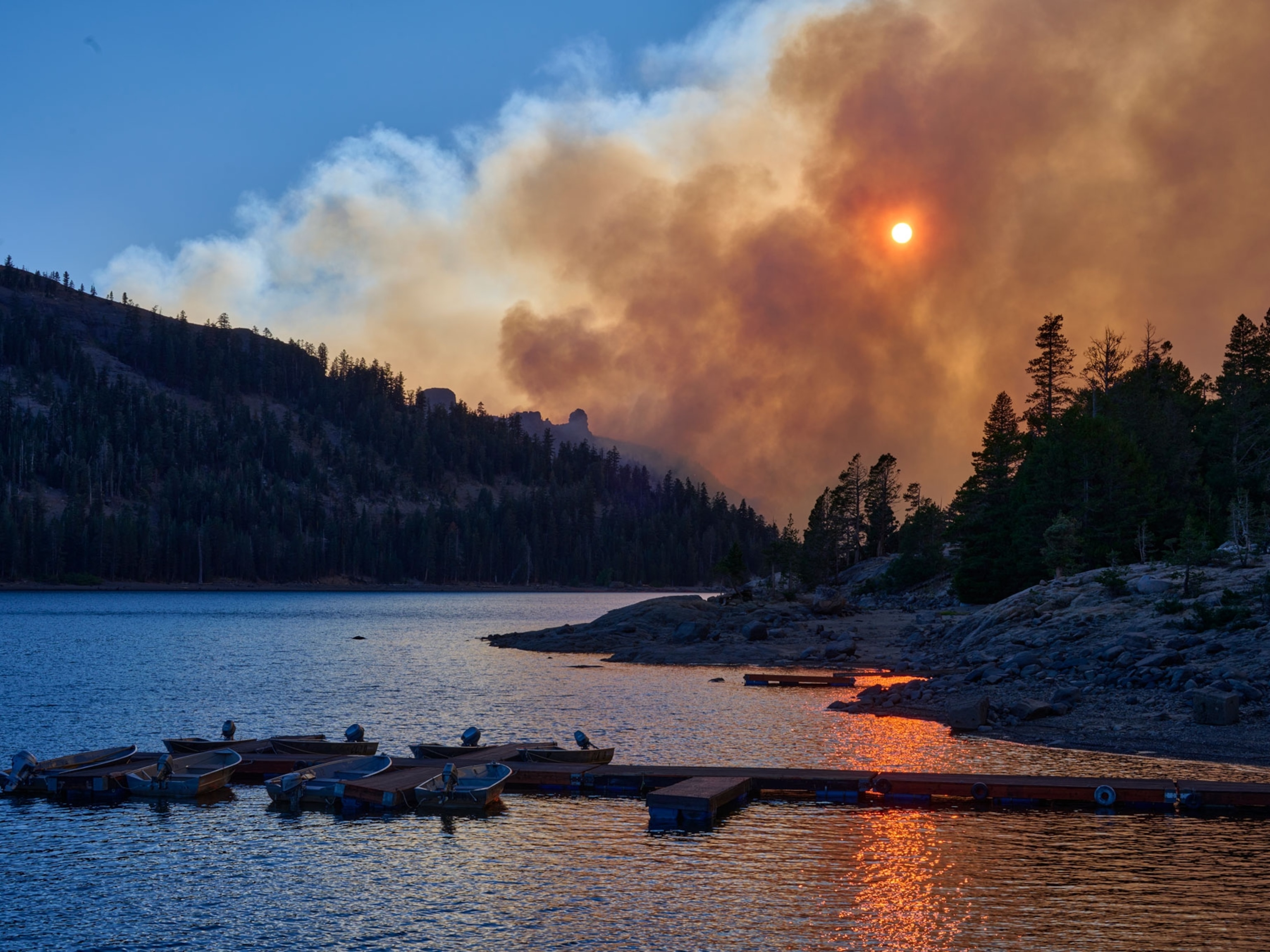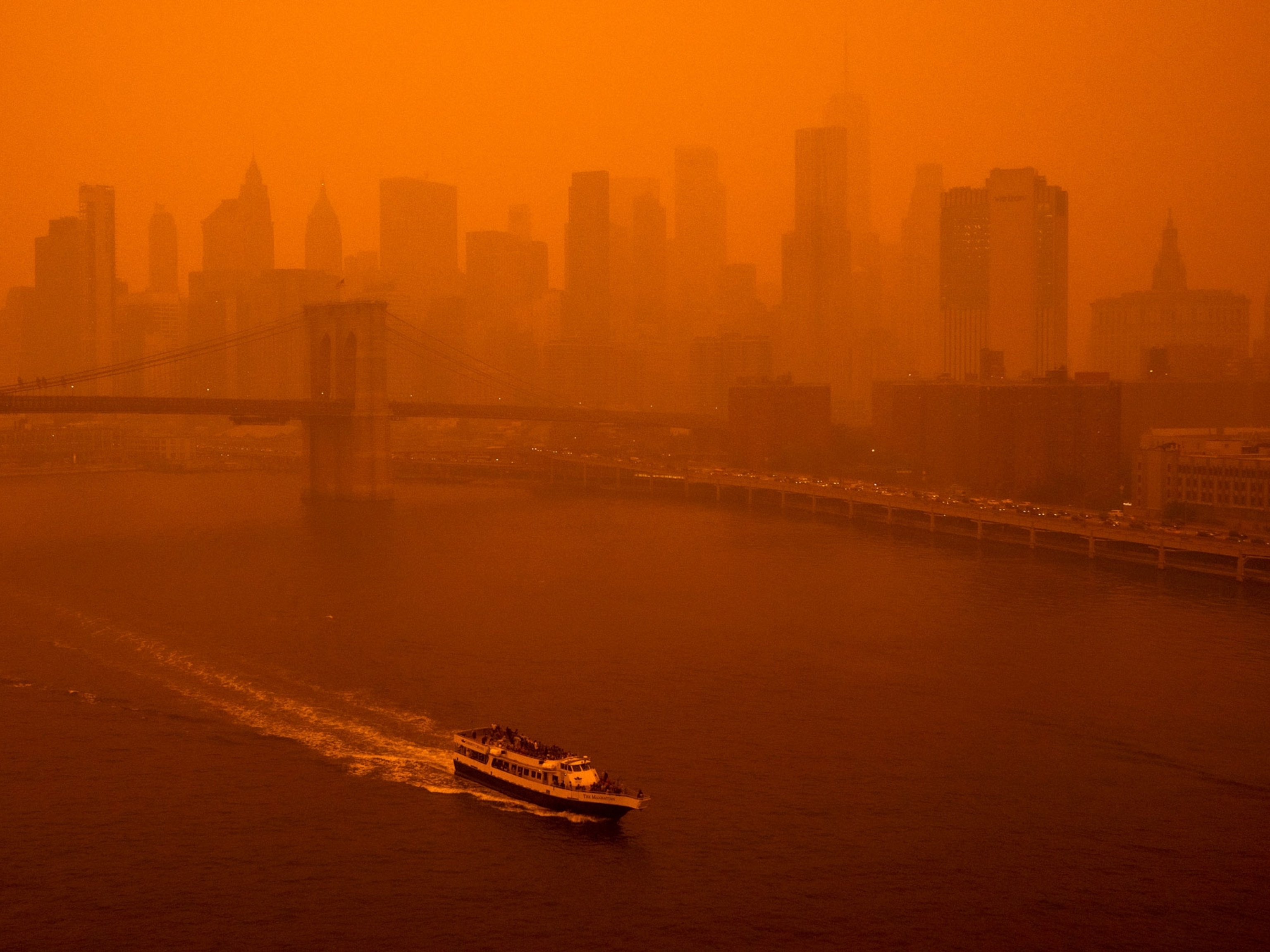
Oregon faces down a ‘once-in-a-generation’ crisis as wildfires rage on
Towns have been destroyed and smoke has made the state's air quality among the worst in the world.
Joseph, Oregon — Skies above this small town—located so far east it nearly touches the border with Idaho—were clear on Friday morning. But locals across the eastern part of the state saw signs that the disaster consuming western and southern Oregon would soon head their way. A waitress at a café pointed at the haze that had settled over the Wallowa mountains, turning them into a blue silhouette. The winds had started to blow east, and soon the picturesque main street of B&Bs and gift shops would be covered in ash and smoke. By Sunday the café could no longer seat patrons outside.
Six months into the coronavirus pandemic, after a summer of protests over police brutality and racism, Oregon faces a third crisis: wildfire sparked by climate change.
Several dozen conflagrations have consumed more than one million acres in the state over the past week. Oregon is blanketed with smoke, leaving most of the state with air quality rated “extremely unhealthy” or “hazardous.” Portland, Eugene, and Bend have climbed the lists of cities with the worst air quality in the world. On Saturday, the Oregon Department of Environmental Quality declared an advisory for the entire state. (Photographers capture surreal orange skies as plumes of smoke cover the West Coast.)


Hotels, parking lots, and stadiums have been transformed into emergency shelters for evacuees. More than 40,000 people have been told to evacuate, according to the Office of Emergency Management. (Earlier, the state had mistakenly estimated that 500,000 residents—10 percent of the state’s 4.2 million—were told to leave their homes.)
A similar scene is playing out across Washington, where more than 790,000 acres have been burned, as well as California, where some 3.1 million acres are now blackened. Experts say the fires are the worst they’ve been in decades due to climate change, a dry, hot summer, and extreme wind. At least 35 people on the West Coast have been killed so far.
In Oregon, where 10 people are known to have died, the blazes have consumed double the yearly average acreage of the past decade. Governor Kate Brown described the destruction as a “once-in-a-generation event.” At least five towns, including Phoenix and Talent, have been all but destroyed.

The receptionist at the log cabin-style Ponderosa Motel in Enterprise, a 2,000-person town nestled below the Wallowa mountains in eastern Oregon, was distraught. She’d grown up in southern Oregon and had heard that the home her father had built for his kids (“and there were a lot of us”) had burned down. “It’s not our house anymore,” she said. “But it still hurts.” Her community had been scattered by evacuation orders. Her eyes widened as she talked about watching from afar as all that was familiar from her childhood disappeared. (See inside California’s race to contain its devastating wildfires.)
Spreading almost as quickly as the wildfires are rumors that “Antifa,” a loosely defined label for anti-fascist protestors, are behind them. This comes after Oregon clocked 100 days of continuous protests on September 5, most of those clouded in a haze of tear gas and incendiary devices. Multiple police departments refuted the rumors, but posts on Twitter and Facebook drew armed vigilantes who set up road blocks and turned away journalists covering the scenes.
Driving west from Joseph on Friday, motorists saw a wall of smoke blanketing the sky, marking the new eastern spread of the fires. The air turned hazy yellow. Pendleton, a town where brewery and cowboy cultures collide, was nearly invisible. Traffic thinned to semi-trucks and a few passenger cars. At points the smoke settled so densely around the road it was impossible to tell whether the highway was snaking through a deep canyon or flat farmland.

A few miles east of Portland, winds had cleared the skies slightly, but grey smoke scented by fire still hung heavy. In a gas station off the highway, two men dismounted from their motorcycles and walked into the small convenience store. One pointed at the clerk’s face mask and said, “We won’t be wearing one of those.” The clerk nodded and then looked out the window, toward where the Columbia River separates the state from its northern neighbor. “We can’t even see Washington anymore,” he said.
Related Topics
You May Also Like
Go Further
Animals
- This fungus turns cicadas into zombies who procreate—then dieThis fungus turns cicadas into zombies who procreate—then die
- How can we protect grizzlies from their biggest threat—trains?How can we protect grizzlies from their biggest threat—trains?
- This ‘saber-toothed’ salmon wasn’t quite what we thoughtThis ‘saber-toothed’ salmon wasn’t quite what we thought
- Why this rhino-zebra friendship makes perfect senseWhy this rhino-zebra friendship makes perfect sense
Environment
- Your favorite foods may not taste the same in the future. Here's why.Your favorite foods may not taste the same in the future. Here's why.
- Are the Great Lakes the key to solving America’s emissions conundrum?Are the Great Lakes the key to solving America’s emissions conundrum?
- The world’s historic sites face climate change. Can Petra lead the way?The world’s historic sites face climate change. Can Petra lead the way?
- This pristine piece of the Amazon shows nature’s resilienceThis pristine piece of the Amazon shows nature’s resilience
- 30 years of climate change transformed into haunting music30 years of climate change transformed into haunting music
History & Culture
- When treasure hunters find artifacts, who gets to keep them?When treasure hunters find artifacts, who gets to keep them?
- Meet the original members of the tortured poets departmentMeet the original members of the tortured poets department
- When America's first ladies brought séances to the White HouseWhen America's first ladies brought séances to the White House
- Gambling is everywhere now. When is that a problem?Gambling is everywhere now. When is that a problem?
Science
- Quieting your mind to meditate can be hard. Here’s how sound can help.Quieting your mind to meditate can be hard. Here’s how sound can help.
- Should you be concerned about bird flu in your milk?Should you be concerned about bird flu in your milk?
- Here's how astronomers found one of the rarest phenomenons in spaceHere's how astronomers found one of the rarest phenomenons in space
- Not an extrovert or introvert? There’s a word for that.Not an extrovert or introvert? There’s a word for that.
Travel
- Germany's iconic castle has been renovated. Here's how to see itGermany's iconic castle has been renovated. Here's how to see it
- This tomb diver was among the first to swim beneath a pyramidThis tomb diver was among the first to swim beneath a pyramid
- Food writer Dina Macki on Omani cuisine and Zanzibari flavoursFood writer Dina Macki on Omani cuisine and Zanzibari flavours
- How to see Mexico's Baja California beyond the beachesHow to see Mexico's Baja California beyond the beaches




